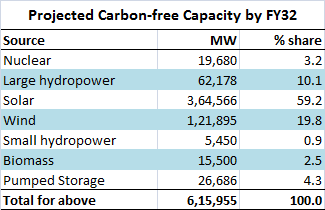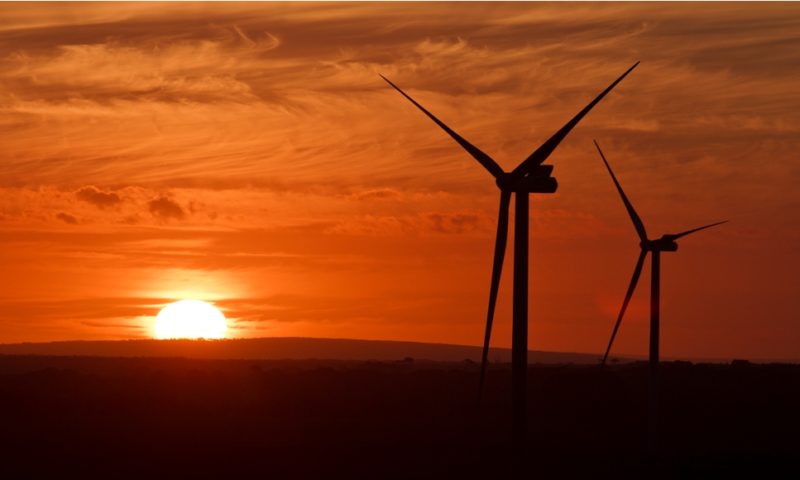It is envisaged that carbon-free sources will account for nearly 70 per cent of India’s aggregate power generation capacity by FY32, according to information released in Parliament.
In a written reply given by Union power minister R.K. Singh in the Rajya Sabha during the recent Winter Session of Parliament, India is projected to have a total power generation capacity of 900,422 mw by end of FY32 (i.e. March 31, 2032).
Of this, 615,955 mw is envisaged to come from “carbon-free” sources, implying a share of 68.4 per cent in the total generation capacity.
 The various sources referred to as “carbon-free” are: nuclear, large hydropower, small hydropower, solar, wind, biomass and pumped storage.
The various sources referred to as “carbon-free” are: nuclear, large hydropower, small hydropower, solar, wind, biomass and pumped storage.
It may be mentioned that the term “carbon-free,” though excludes coal, does not fully imply “green.” For instance, nuclear power, though carbon-free, is not considered as “green energy” as it is fuel-dependent. However, as there is no combustion of carbon-based (fossil) fuel in the production of nuclear power, it can be treated as a “carbon-free” source of energy.
Further, large hydropower plants are those with installed capacity of 25 mw or more. Such plants, though clearly a source of “green energy” fall under the ministry of power. On the other hand, small hydropower falls under the purview of the ministry of new and renewable energy. Nuclear energy falls under the department of atomic energy and not the ministry of power.
While 615,955 mw out of the total 900,422 mw would come from carbon-free sources, the remaining 284,467 mw would be from carbon-based fuel sources typically including coal, diesel, naphtha, natural gas, etc.
Dominant sources
It can be seen that solar would be a dominant source of carbon-free energy, estimated to account for nearly 60 per cent of carbon-free capacity by FY32. Even if we consider the entire power generation capacity (carbon-based and carbon-free) by FY32, solar is expected to have a share of around 40 per cent. (See table)
With 1,21,895 mw of installed capacity envisaged by end-FY32, wind is slated to the next biggest source of carbon-free energy, with a share of 20 per cent in carbon-free sources.
Energy storage
In addition to carbon and carbon-free power generation capacity, India is also envisaged to have 47,244 mw of battery-based energy storage system (BESS) capacity by FY32. Technically speaking, BESS cannot be regarded as fresh power generation capacity as the batteries are charged using electricity generated from sources already accounted for in the total power generation capacity. All the same, BESS, with an average discharge time of five hours, is expected to provide 236,220 MWh of electricity, typically meant to meet peak power demand.
Current scenario
As of October 31, 2023, India’s total power generation installed capacity stood at around 426 GW (1 GW = 1,000 mw) that included 132 GW from renewable sources like solar, wind, biomass, small hydropower, etc. The main bulk, of around 239 GW, came from thermal power plants including coal, gas, diesel, etc.
The current share of carbon-free capacity is around 44 per cent and this is expected to grow to 68 per cent, as discussed in this story.
The author of this story, Venugopal Pillai, is Editor, T&D India, and may be reached on venugopal.pillai@tndindia.com

